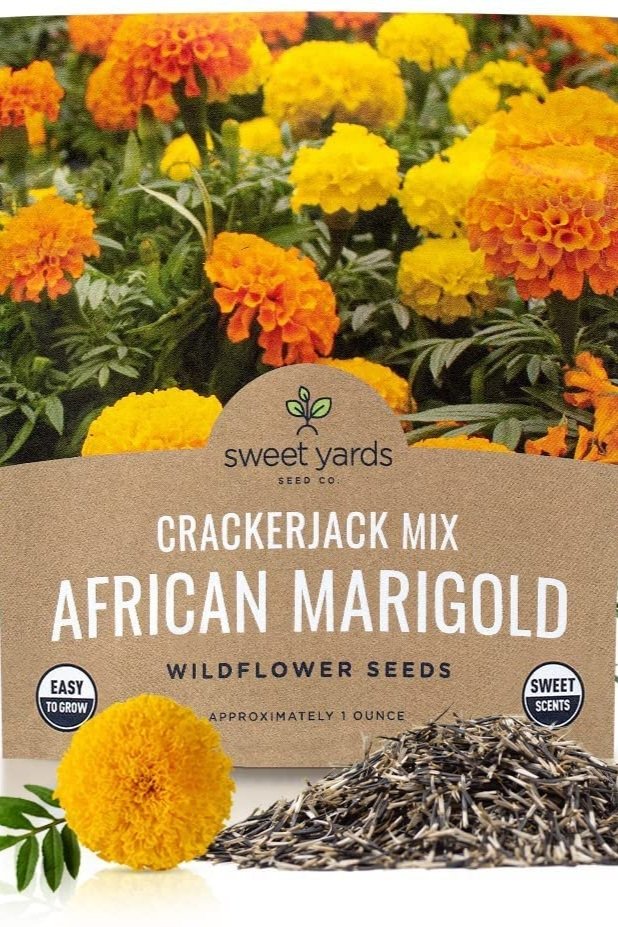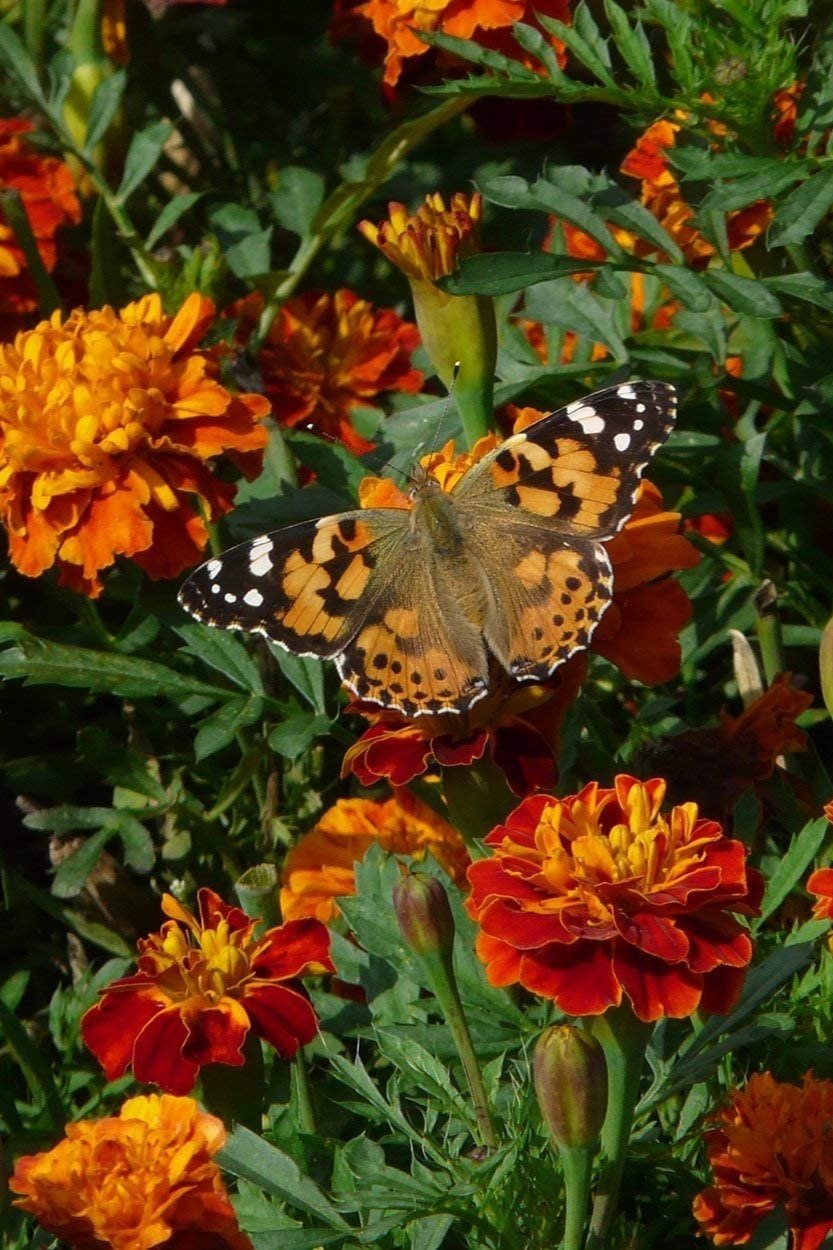marigolds in the vegetable garden
Hi, friends!
We are just about a week away from our last frost date here in zone 7b, so I wanted to share some spring planting tips with you all!
Up first: why marigolds should be a staple in every veggie garden!
You may think these flowers are just for aesthetics, but marigolds actually provide a plethora of benefits to a home garden.
They attract pollinators like honeybees and butterflies. As any gardener knows, pollinators are not only vital to a successful crop, they are an integral part of entire ecosystems. Save the bees and plant with pollinators in mind!
They deter pests. Marigolds deter critters like mosquitos, harmful nematodes, and cabbage worms. They also attract beneficial insects like ladybugs, which love to eat aphids.
The petals are edible and medicinal! Marigold petals have long been used as a natural topical treatment for skin issues like burns, bug bites, rashes, and eczema. There is some evidence that they can be used as an anti-inflammatory as well. (Keep in mind that there are many varieties of marigold and not all are the same! Check your plant labels and look up appropriate usage before you try it at home.) As an edible, marigold petals have a flavor that ranges from citrusy to slightly spicy, depending on the variety. Our golden retriever seems to think the ones I planted in our raised beds this week were particularly tasty, because she stole two whole blossoms for an afternoon snack! Stinker.
They enhance the growth of companion plants. I’m a big fan of companion planting and have really enjoyed learning about it as I planned out this year’s garden. Essentially, companion planting is a method of pairing particular plants together that benefit one another naturally and reduce the need for pest control intervention. Marigolds are great companions for cucumbers, melons, eggplants, squash, potatoes, lettuce, pumpkins, tomatoes, asparagus, beans, and onions.
I started about two dozen marigolds from seed a few weeks ago, but they aren’t quite ready to go in the garden yet so I bought some starts from my local nursery to get started. Marigolds can be planted as a garden border or sprinkled throughout the garden bed. My dad grew up on a farm and told me that his family tended to just place them in and around the other plants a bit haphazardly. Personally, I like a bit more order, so I lined them up in tidy rows in my raised beds :). I also ended up with quite a few more cherry tomato plants than I planned on (my seedlings have been working overtime!), so I’ll be planting several in pots in addition to the raised beds and I plan to partner a marigold and basil with each of the potted tomatoes as well.
To keep your marigolds in ship shape, deadhead spent blooms. This means removing flowers that have wilted, which encourages fresh growth.
One more thing! At the end of the growing season, chop up your spent marigolds and mix them back into the soil! This will help control nematodes in the soil that might otherwise lie in wait for your next round of planting.
So did I convince you to plant marigolds in your veggie garden?? I hope so! These beauties really are a gardener’s best friend :).
That’s all for today, friends! Happy planting!
xo
P.S. I linked to some marigold seeds below, if you’d like to try growing some from seed! They are super easy to grow and it’s much cheaper than buying mature plants from the nursery, especially if you’ll need a lot! Click the seed packet in the image gallery to purchase or click here :).






